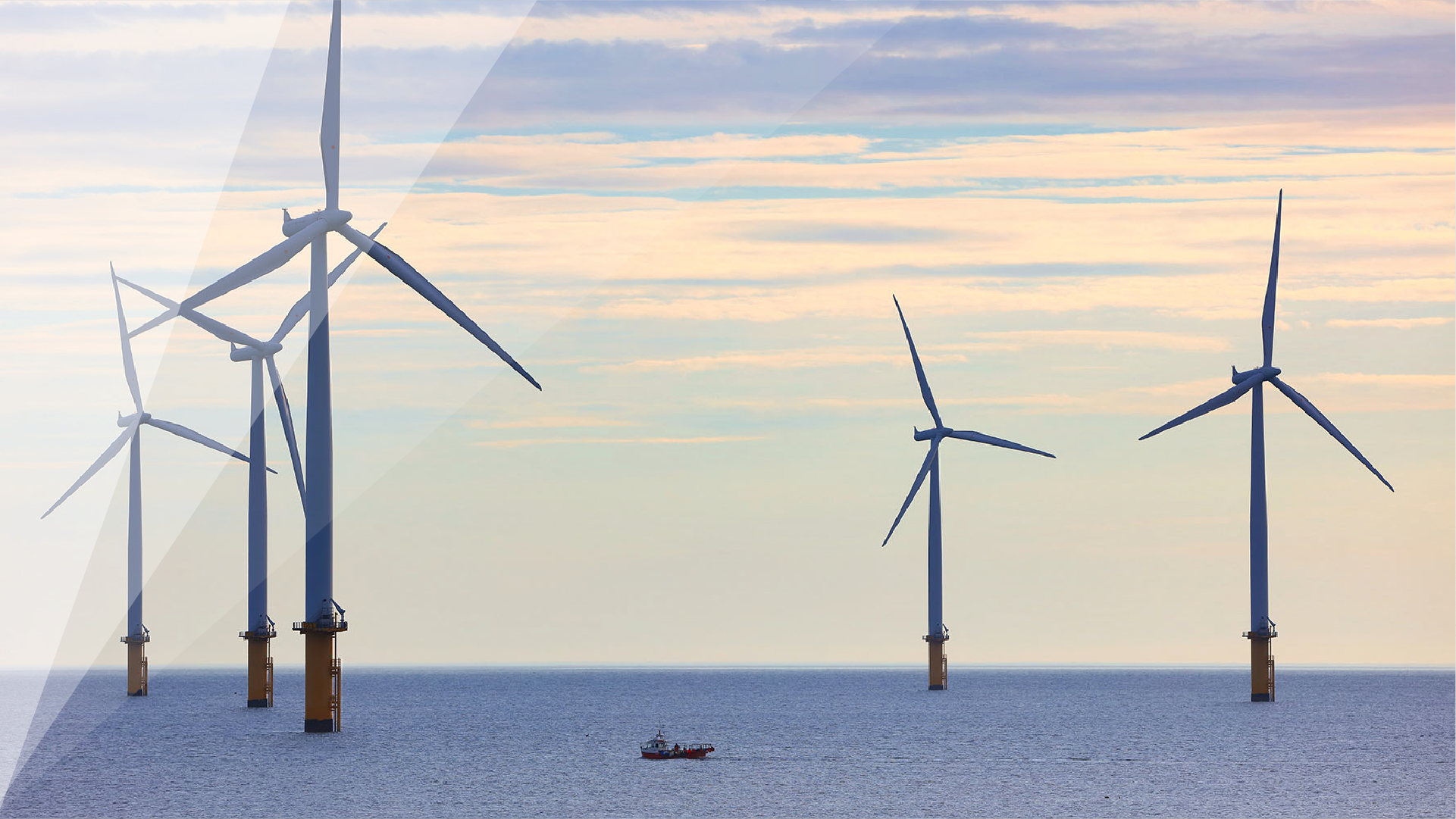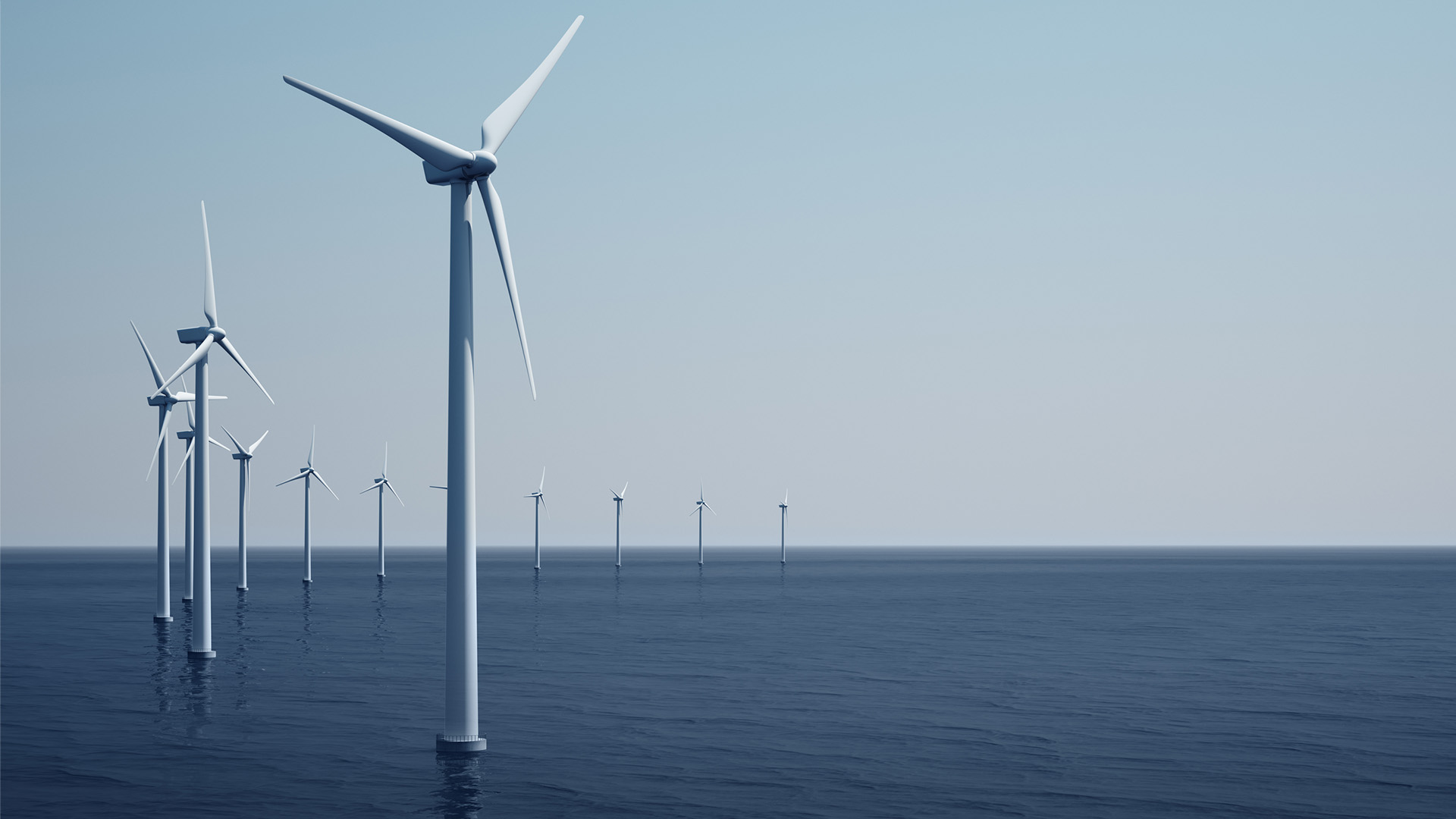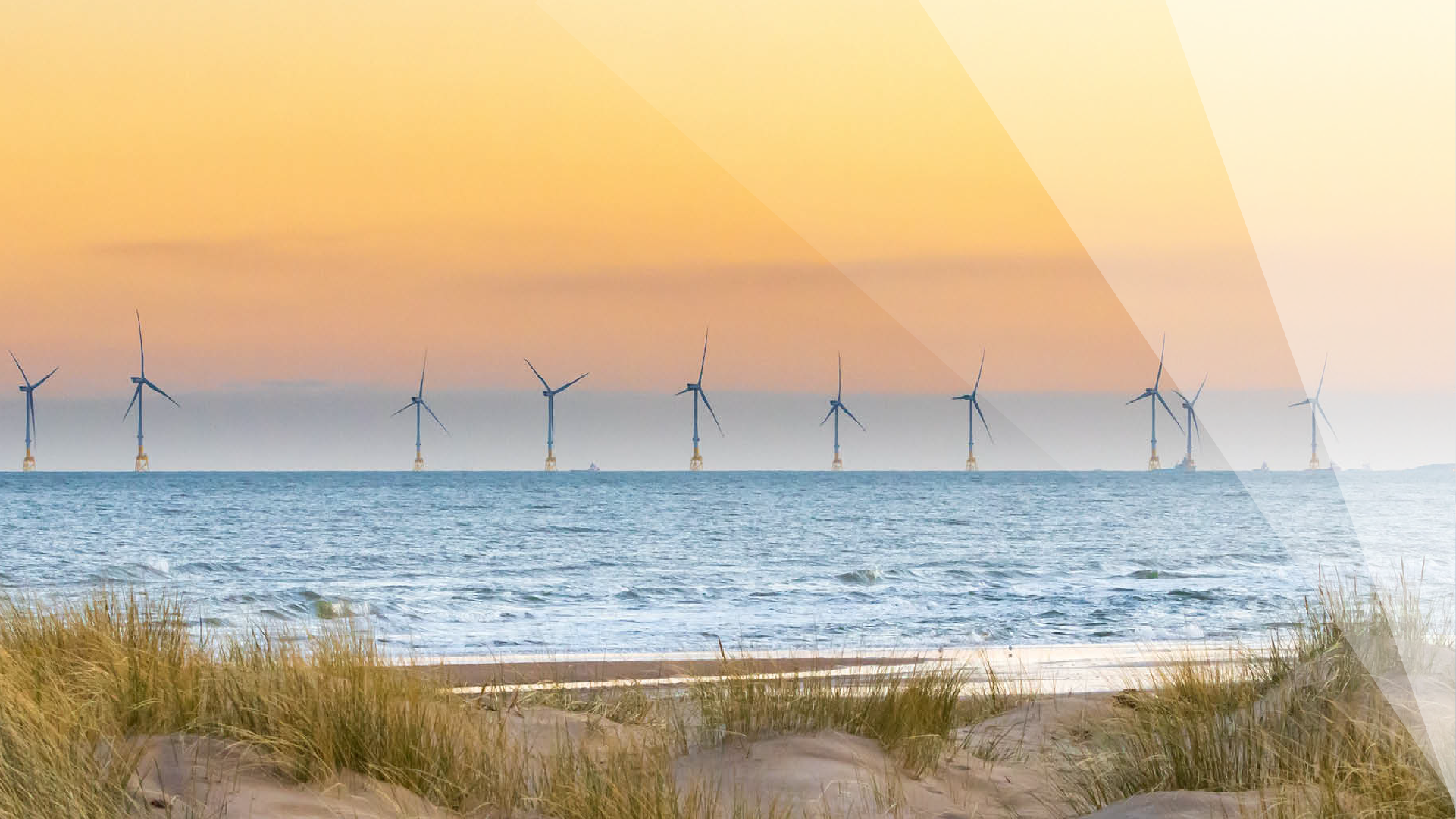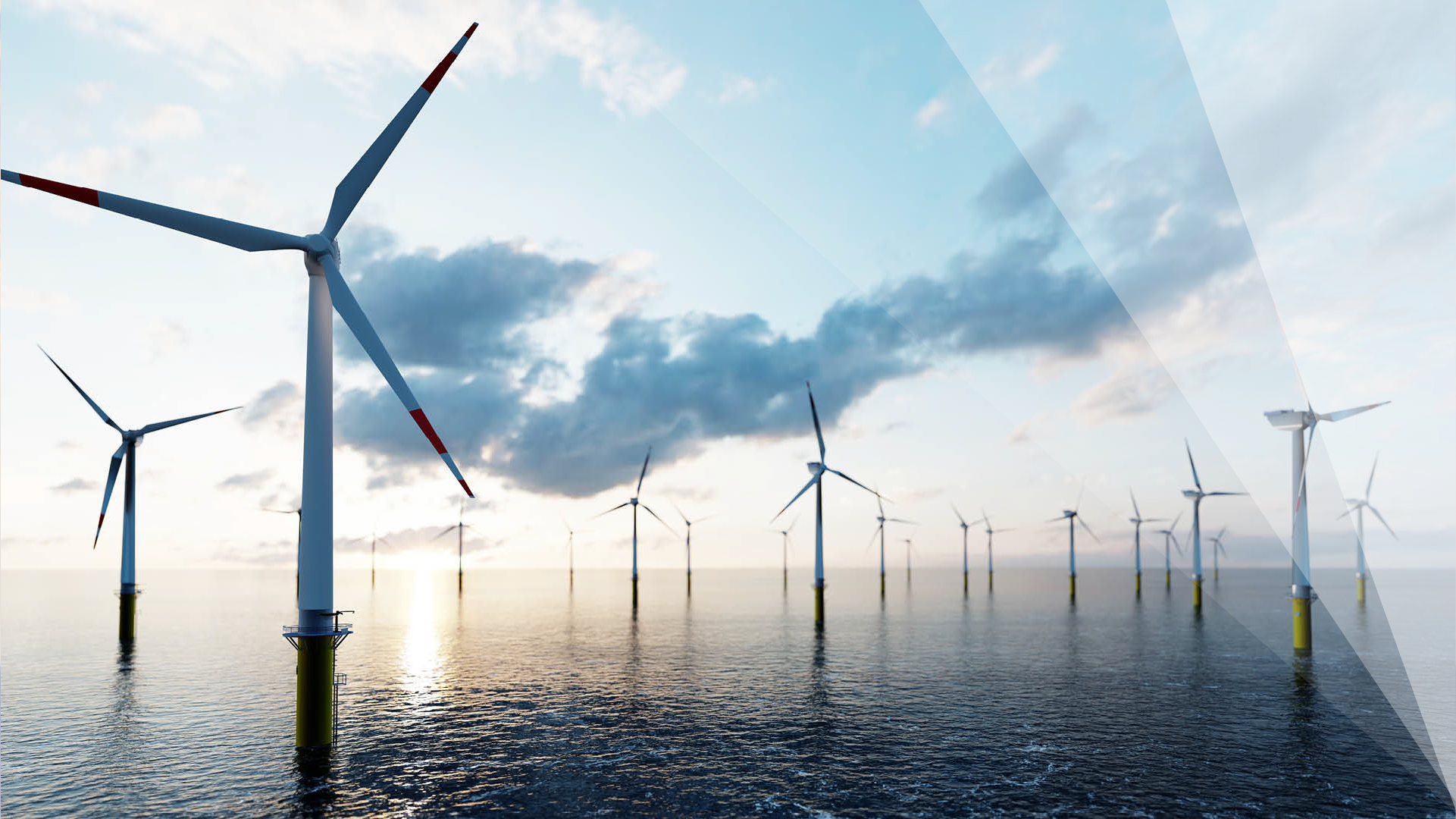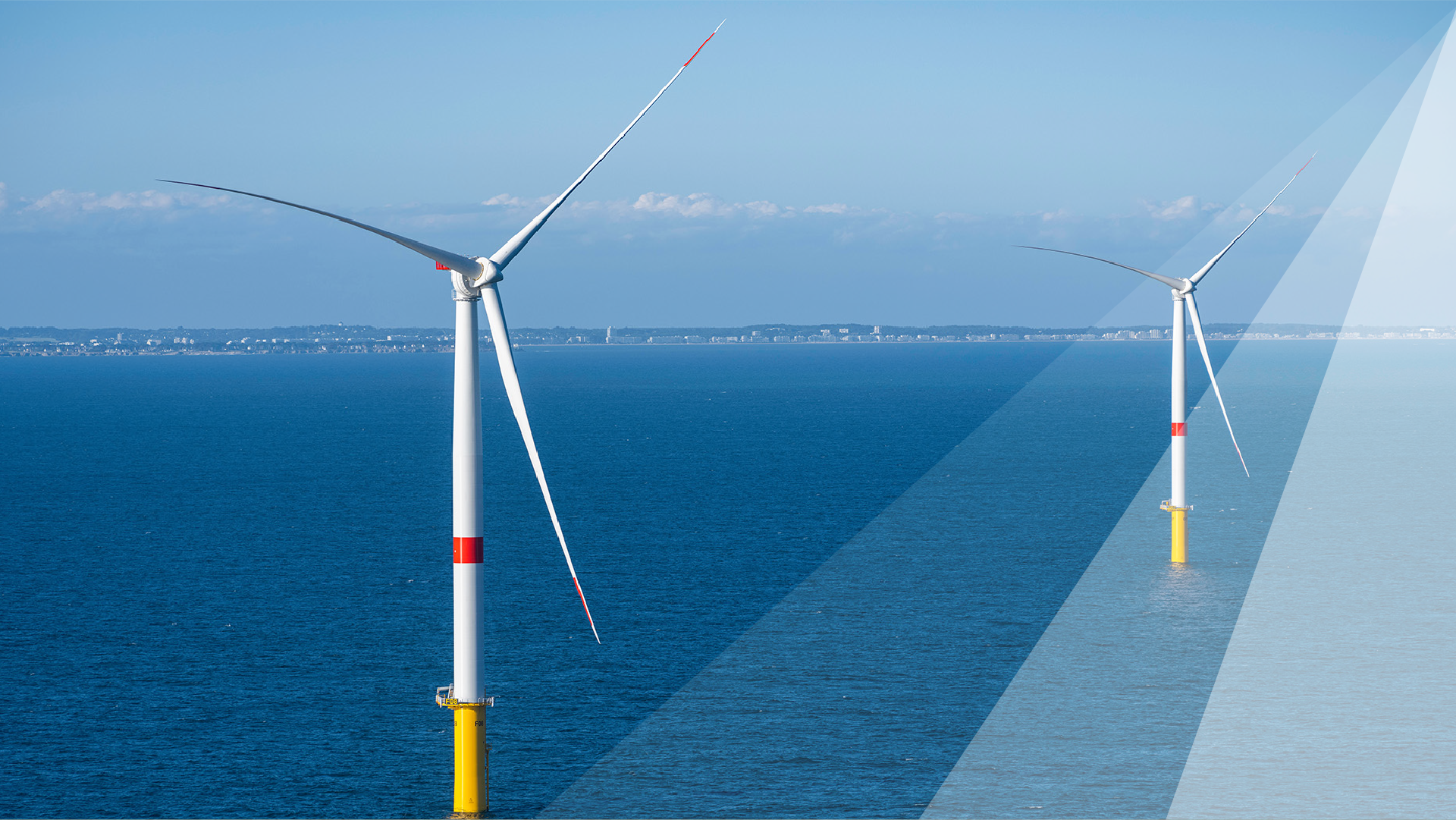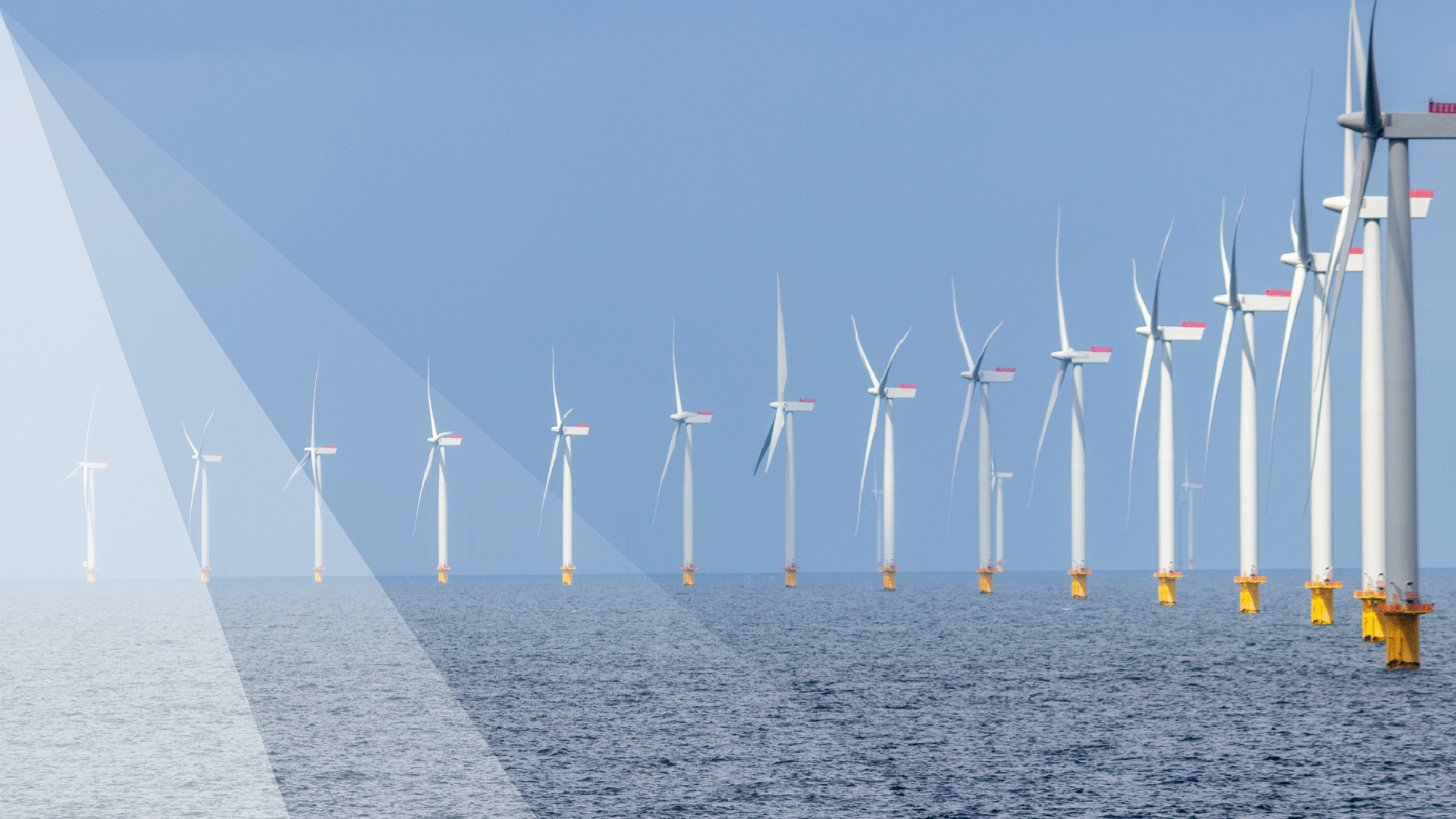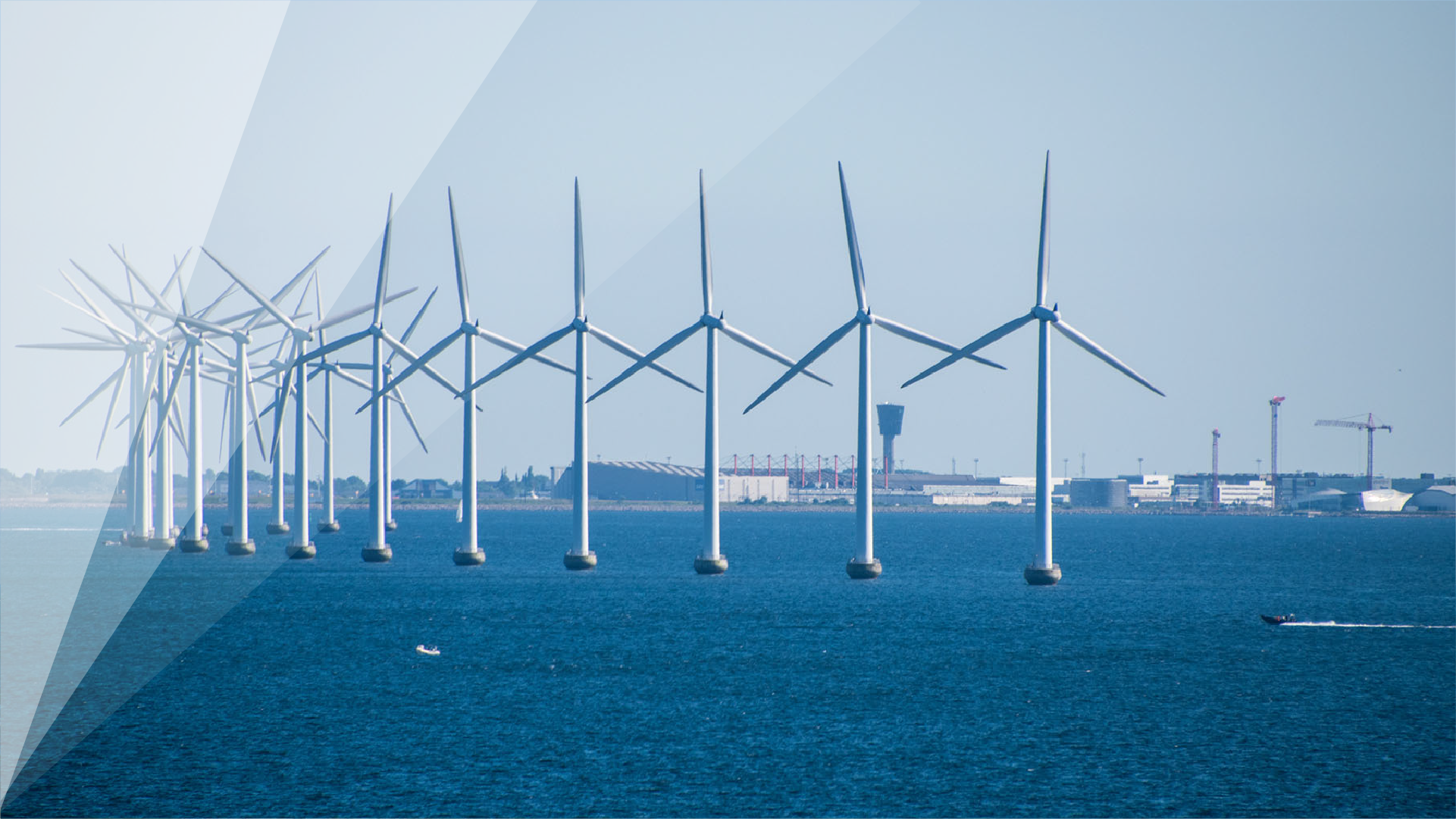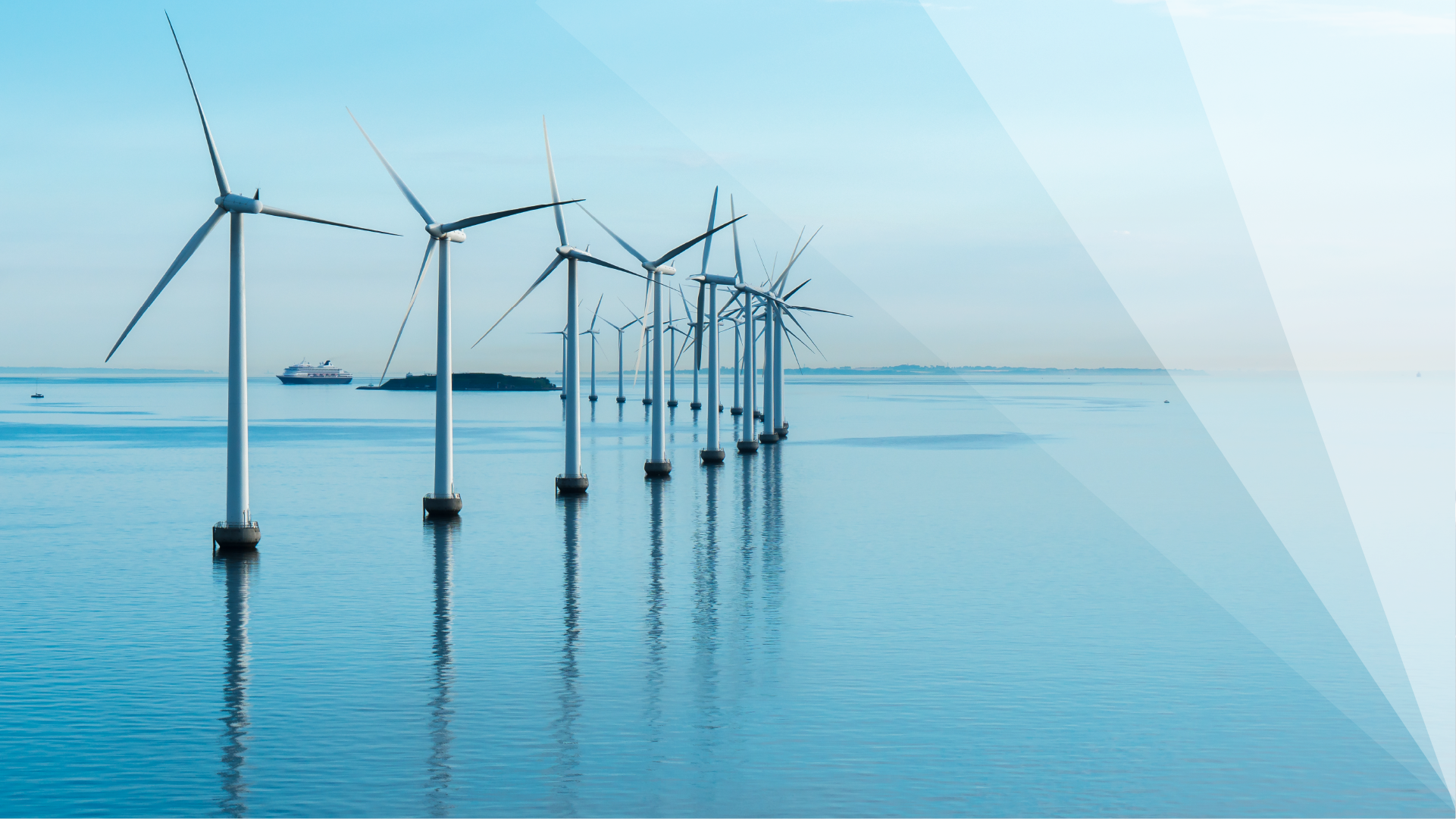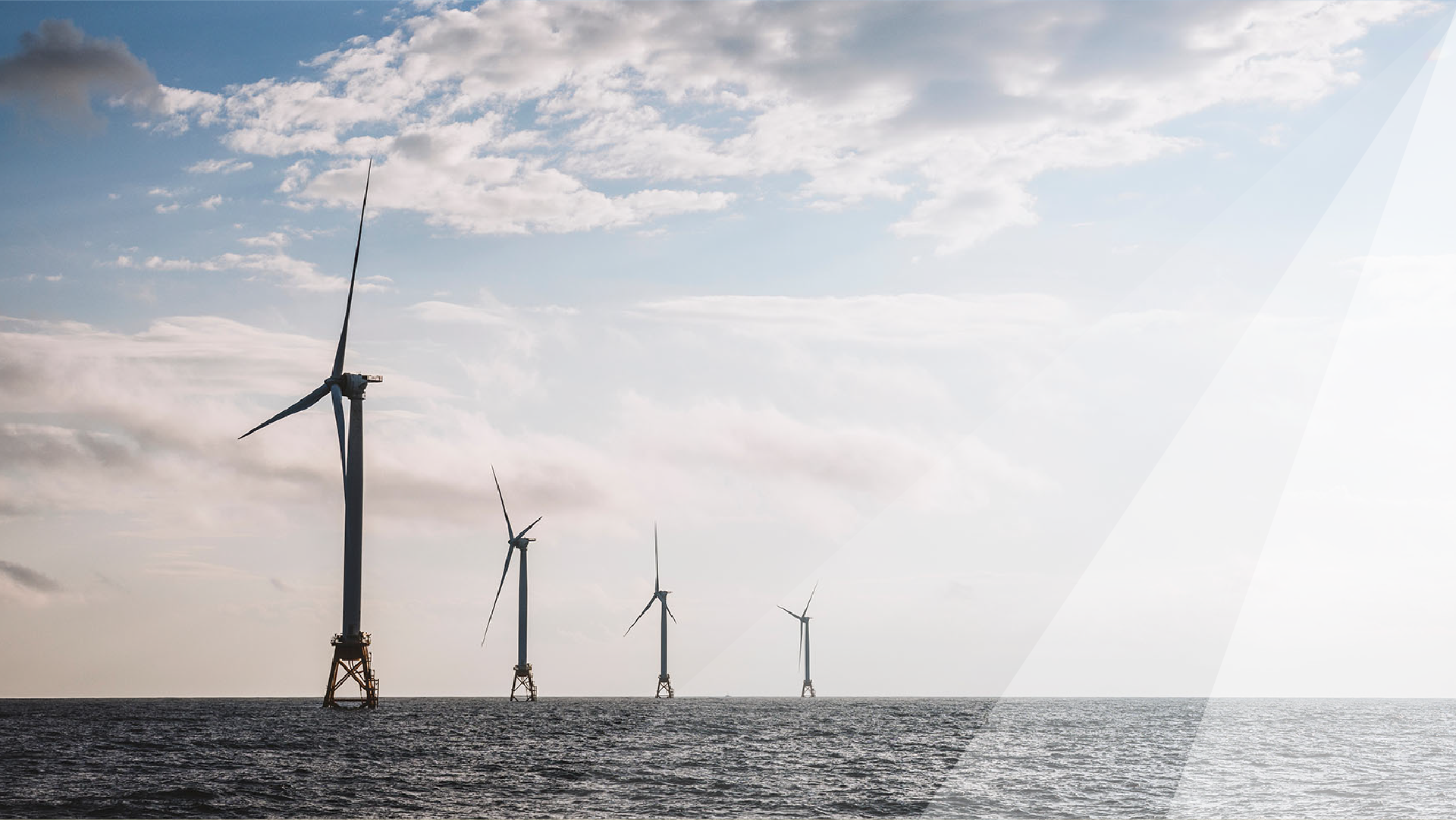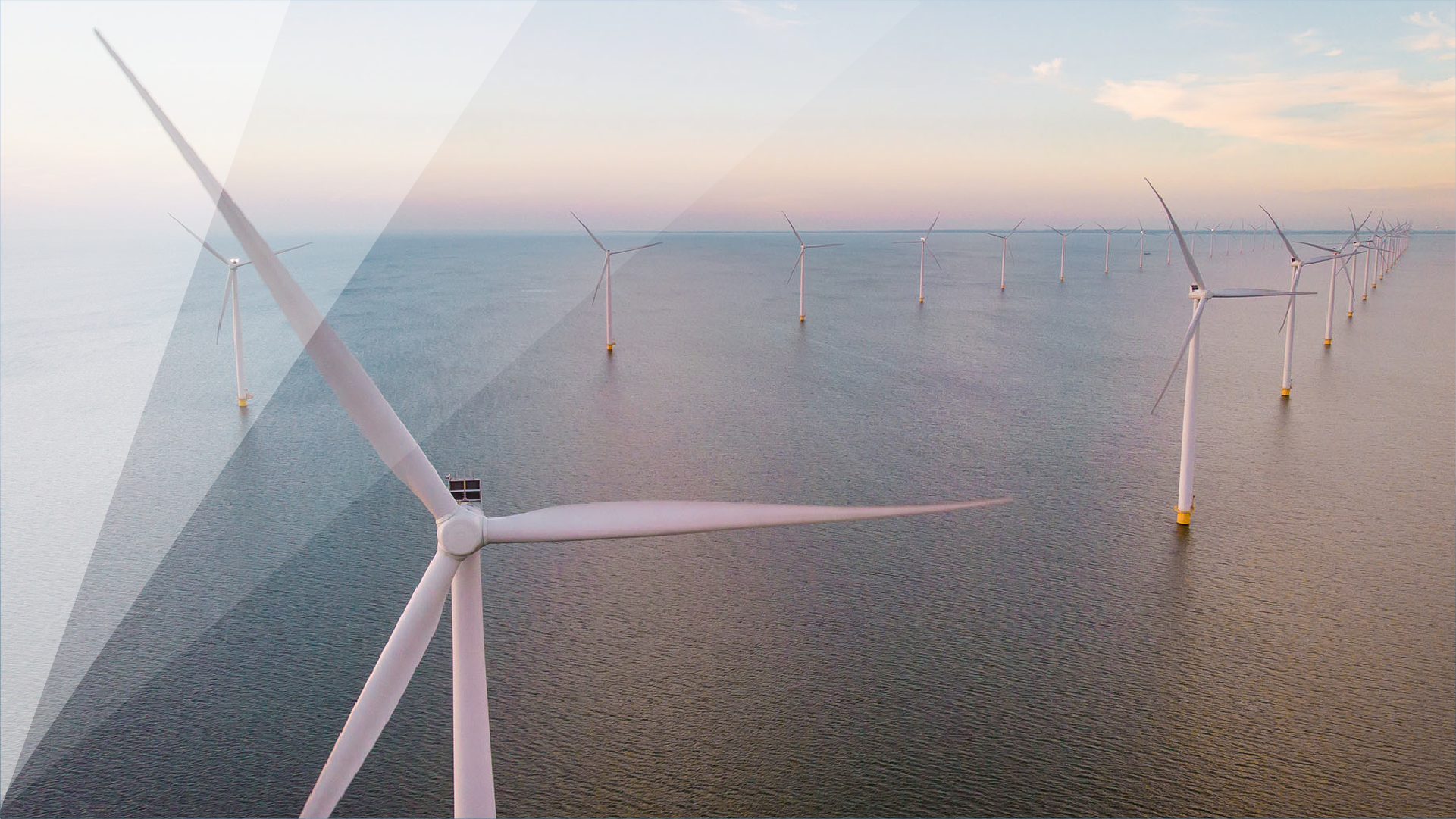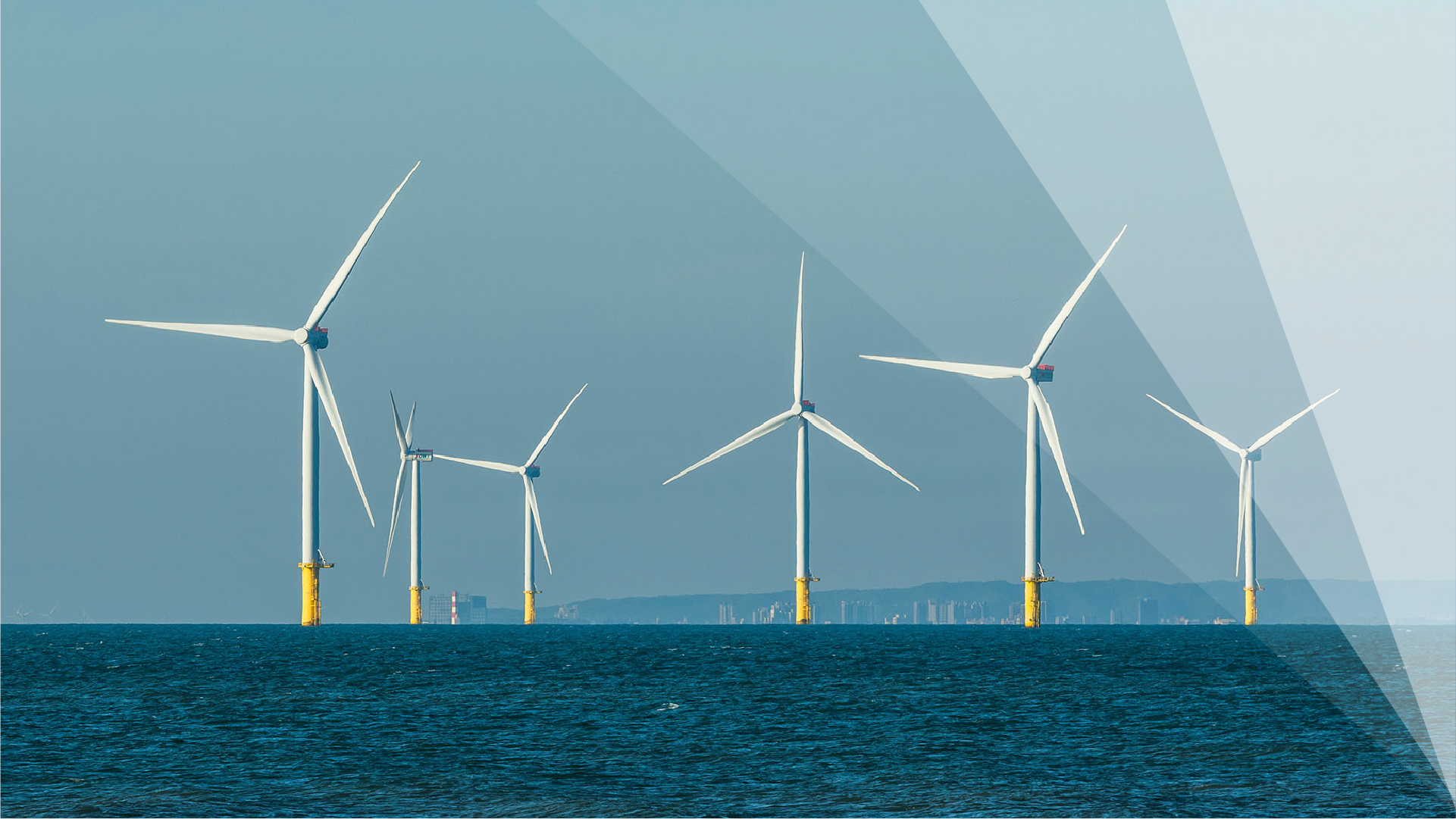
Global offshore wind: Taiwan
Global | Publication | oktober 2024
Information correct as of 15 October 2024.
Focus on Taiwan
In collaboration with: 

Market overview
The Taiwanese Government planned in 2017 to have an energy mix comprised of 50 per cent natural gas, 27 per cent coal, 20 per cent renewable energy, 2 per cent other energy and 1 per cent nuclear energy by 2025. However, according to the "2023 National Electricity Supply and Demand Report" released by the Ministry of Economic Affairs, the original goal of achieving a 20 per cent share of renewable energy by 2025 has been delayed and is now expected to be reached by November 2026.
With the exception of China, Taiwan is the largest offshore wind market in the Asia Pacific region and is developing rapidly. To meet the renewable energy target, the Taiwanese Government is seeking to increase offshore wind capacity by 5.7GW by 2025. Capacity could reach 8GW by 2027, but there are several factors which may delay buildout of these projects, including macro economic conditions, permitting and consenting processes, supply chain, infrastructure availability, localisation and uncertainty around financing.
As of 2023, Taiwan had 2.25GW of offshore wind capacity.
Taiwan’s ambitious program to promote offshore wind power as a major energy source – installing over 700 turbines in the Taiwan Strait by 2025 - will require an estimated investment of US$20 billion.
The Ministry of Economic Affairs published new rules in August 2021 surrounding the development of the third phase of the offshore wind energy projects. Based on the foregoing, from 2026 to 2035, a capacity of 15GW is planned and the island aims to increase installed capacity by 1.5 GW each year. With intense competition among wind farm developers, all bidders in the third phase bid rounds had proposed their proposed power purchase agreement (PPA) price in NTD 0 /kWh or NTD 0.1/kWh to BOE to win the development rights. Further, the relevant costs incurred are thereby likely to be shifted from the developers to corporate buyers via corporate power purchase agreements (CPPA). In other words, for the round three projects, the power generated will be sold mainly via CPPAs and wind farm development costs will be increasingly covered by CPPAs. Such trends are derived both from the global initiative to reach net zero carbon emissions and local corporate buyers’ huge demand for green energy.
The Formosa 1 project was the first offshore demonstration wind farm in Taiwan. Completed in 2019, the total generation capacity of Formosa 1 is 128MW. The project is owned by Ørsted, JERA, Swancor Renewables, Mitsui Osk Lines and Hokuriku Power Company.
The Formosa 2 project was completed in 2023. The 376MW project is owned by JERA, Macquarie Asset Management’s Green Investment Group and Synera Renewable Energy.
The Greater Changhua 1 and 2a offshore wind project was completed in April 2024 after having achieved first power in April 2022. At 900MW, the project is Taiwan’s largest offshore wind project. The project is located 35-50 km off the cost of Changhua County. The 605 MW Greater Changhua 1 is owned by Ørsted, and a consortium comprising Caisse de dépôt et placement du Québec (CDPQ) and the Taiwanese private equity fund, Cathay PE. The 295 MW Changhua 2a is owned solely by Ørsted.
Ørsted is also developing the 920MW Changhua 2b & 4 projects (which are expected to be commissioned in 2025/6), the 570MW Great Changhua 3, 3GW Wo Neng 1&2 and 2.1GW Xu Feng 1,2,3 projects.
In May 2024 the 600MW Changfang and Xidao projects off the coast of Taichung reached completion. Copenhagen Infrastructure Partners, who owns the Changfang and Xidao projects, is also developing the 300MW Zhongneng and 500MW Fengmaio projects, which are expected to be operational in 2025 and 2027, respectively.
By August 2024, Skyborn Renewables GmbH’s 640MW Yunlin offshore wind farm had moved into the final installation phase with completion expected by the end of 2024.

Taiwan offshore wind projects
| Project name | MW | Support/ Offtake | Status | Shareholders | |
| 1. | Formosa 1 |
128 | Program | Demonstration project Completed 2019 |
Ørsted, JERA, Swancor Renewables, Mitsui Osk Lines (M.O.L.) and Hokuriku Power Company |
| 2. | Changhua |
109.2 | Program |
Demonstration project Completed 2021 |
Taiwan Power Company |
| 3. | Greater Changhua 1 |
605.2 | Feed-in tarriff | Awarded Round 1 Completed 2024 |
Ørsted, CDPQ and Cathay Private Equity |
| 4. | Greater Changhua 2a |
294.8 |
Feed-in tariff |
Awarded Round 1 Completed 2024 |
Ørsted |
| 5. | Hai Long 2a, 2b and 3 |
1022 |
Feed-in tariff/CPPA |
Awarded Rounds 1 and 2 Construction |
Northland, Mitsui and Gentari International Renewables |
| 6. | Yunlin |
640 | Feed-in tariff |
Awarded Round 1 Construction |
Skyborn Renewables, TotalEnergies, Electricity Generating Public Company and Sojitz Corporation |
| 7. | Taoyuan |
350 | Awarded Round 1 License application rejected |
WPD Taiwan Energy Co. Ltd. |
|
| 8. | Changfang - Xidao |
600 |
Feed-in tariff |
Awarded Round 1 Completed 2024 |
Copenhagen Infrastructure Partners, Global Power Synergy Public Company, Taiwan Life and Transglobe Life |
| 9. | Formosa 2 |
376 | Feed-in tariff | Awarded Round 1 Completed 2023 |
JERA, Macquarie Asset Management’s Green |
| 10. | Changhua 2 |
294.5 | Program | Awarded Round 1 Construction |
Taiwan Power Company |
| 11. | Hai Xia 1 |
300 | Feed-in tariff | Awarded Round 1 Development |
LeaLea Group and Skyborn Renewables |
| 12. | Datian |
165 | Feed-in tariff | Awarded Round 3.1 Withdrew |
Skyborn Renewables |
| 13. | Greater Changhua 2b and 4 |
920 | Program | Awarded Round 2 Construction |
Ørsted |
| 14. | Zhongneng |
300 | Feed-in trariff | Awarded Round 1 Completed 2024 |
Copenhagen Infrastructure Partners and China Steel Corporation |
| 15. | Feng Miao | 500 | CPPA | Awarded Round 3.1 Construction |
Copenhagen Infrastructure Partners |
| 16. | Formosa 3 / Haiding 2 |
600 | CPPA |
Awarded Round 3.1 EIA approved. |
Corio and TotalEnergies |
| 17. | Wei Lan Hai Changhua (previously known as Huan Yang) |
440 | CPPA |
Awarded Round 3.1 Development EIA approved |
EDF Renewables and Taiya Renewable |
| 18. | Formosa 4 |
495 | CPPA |
Awarded Round 3.1 Development |
Synera Renewable Energy, Taiwan Petroleum Corp, J&V Energy Technology Co, Yeong Guan Group and Tien Li Offshore Wind Technology Co |
| 19. | Hai Xia 2 |
300 | CPPA |
Awarded Round 3.1 EIA approved |
LeaLea Group and Skyborn Renewables |
| 20. | Wo Neng1, 2 |
1000~1500 |
Development |
Ørsted |
|
| 21. | Xu Feng 1, 2, 3 |
1350~2,100 |
Development EIA approved.(Xu Feng 2, 3) |
Ørsted |
|
| 22. | Youde |
700 |
CPPA |
Awarded Round 3.2 EIA approved |
Shinfox |
| 23. | Formosa 6 |
800 |
CPPA |
Awarded Round 3.2 EIA approved |
Synera Renewable Energy |
| 24. | Greater Changhua 3 |
570 |
CPPA |
Development |
Ørsted |
| 25. | Feng Miao 2 |
600 |
CPPA |
Awarded Round 3.2 Development |
Copenhagen Infrastructure Partners |
| 26. | Formosa 3 / Haiding 1 |
360 |
CPPA |
Awarded Round 3.2 EIA approved |
Corio Generation and TotalEnergies |
| 27. | Deshuai |
240 |
CPPA |
Awarded Round 3.2 |
Enervest |
| 28. | Hsinchu Winds of September (floating) |
1000 | Unknown | Announced EIA approved |
BlueFloat Energy |
| 29. | Hai Shuo - Formosa 5 (floating) |
1536 | Unknown | Development EIA approved |
Synera Renewable Energy |
Taiwan: Development process

Taiwan: Support regime and offtake
There are two principle support schemes for offshore wind:
Offshore Wind Power Demonstration Incentive Program (the “Program”)
The Program was introduced on July 3, 2012 in accordance with Para 3 of Article 11 of the “Renewable Energy Development Act” to encourage the development of demonstration offshore wind farms by providing a Government subsidy for selected demonstration offshore wind projects. Under the Program, the installation of offshore demonstration wind turbines was to be completed by 2016, with the development of the demonstration wind farms to be completed by 2020. Three demonstration offshore wind farms were selected and supported by the Program, totalling approximately 358 MW. The Program provides a subsidy of up to 50 percent of the installation expenditure for the installation of demonstration wind turbines. During the operation phase, the Program provides incentive fees of up to NT$250m.
Feed-in-tariff (FiT)
The Renewable Energy Development Act provides the developer with a 20-year guaranteed PPA with Taipower at a contracted FiT rate. The FiT rate which may be granted is set by the MOEA and is reviewed annually. In practice, in Q4 of each year, the BOE would publish the FiT rate applicable to the PPAs executed in the subsequent year. The 2020 FiT rate was 5.0946 (NT$)/kWh (roughly US$0.1691) (applicable to PPAs signed in 2020). The 2021 FiT rate was 4.6568 (NT$)/kWh (applicable to PPAs signed in 2021). The 2022 FiT rate is set currently at 4.5024 (NT$)/kWh (applicable to PPAs signed in 2022). The 2023 FiT rate was 4.5085 (NT$)/kWh (applicable to PPAs signed in 2023).
Options are also available to front-load the FiT rates during the first ten years or to back-load in the last ten years. In comparison with FiT rates in Europe in recent years (NT$ 2-3/kWh), the Taiwanese FiT rates are significantly higher, reflecting the relative inexperience of the market and supply chain.
Grid auctions
Taiwan expects to see offshore wind capacity increase by 15 GW between 2026 and 2035, with the expectation of installed capacity increasing by approximately 1.5 GW per year.
Grid connection capacity is auctioned by the Ministry of the Economic Affairs (MOEA). Whilst the first allocation round (April 2018) was awarded on the basis of FiT rates, the second allocation round (June 2018) was auction-driven and attracted seven participants for ten projects.
Taiwan's offshore wind Round 3.1 concluded on 30 August 2023 with a total awarded capacity of 2.335GW out of the 3GW available. The projects are scheduled for grid connection by 2026/7. The winning projects comprise:
| Project name | MW | Ownership |
| Feng Miao | 500 | Copenhagen Infrastructure Partners |
| Formosa 3 - (Haiding 2) |
600 | CORIO / TotalEnergies |
| Hai Xia Phase 2 |
300 | Skyborn |
| Formosa 4 |
495 | SRE |
| Ocean (Huan-Yang) |
440 | EDFR/Taiya |
In August 2024, the MOEA released the list of the projects awarded capacity in the latest offshore wind tender round (Round 3.2). Five offshore wind farms with a combined capacity of 2.7GW were awarded capacity The originally planned capacity limit for this phase was 3.6GW. According to a statement from the Ministry of Economic Affairs in September 2024, the remaining capacity may be offered in Round 3.3.
The five wind farms that were awarded with development rights in Round 3.2 all submitted bids coming in at NT$0 per kWh. This pricing structure necessitates that the projects secure Corporate Power Purchase Agreements (CPPA). The winning projects comprise:
| Project name | MW | Ownership |
| Youde |
700 | Shinfox |
| Formosa 6 |
800 | Synera Renewable Energy |
| Fengmiao 2 |
600 | Copenhagen Infrastructure Partners |
| Formosa 3 / Haiding 1 |
360 | Corio Generation and TotalEnergies |
| Deshuai |
240 | Enervest |
With overlapping project areas, MOEA plans to finalise marine region maps before formally allocating capacity to each of the projects. Upon confirmation of their capacity allocations, developers must sign contracts within three months, aiming for a November 2024 signing. The current offshore wind power plan targets grid connection between 2028 and 2030.
The Renewable Energy Development Act requires Taiwanese companies to source 10 per cent of their energy needs from renewable sources. As a result, corporate buyers are being encouraged to enter into CPPAs to financially support the wind farm development.
Given that Taiwan is running low on available space for offshore wind farms within its territorial waters, Round 3.3 may be the last round for fixed bottom offshore wind under the current planning regime.
Taiwan: Challenges
Legal risks and uncertainty
The EIA policy increases uncertainty for investors. Reasoning for this is that the EIA takes into consideration a number of factors that are not related to environmental impacts.
During the EIA process, this leads to concerns (potentially unrelated to environmental matters) being raised which, in turn, can lead to additional requirements being placed on developers.
Marine spatial planning
Arbitrary fisheries compensation scheme
The “offshore wind power plant fisheries compensation formula”, applicable to fisheries affected by offshore wind power plants, has been described by some participants as arbitrary.
Fishery rights and fishing areas are poorly defined which has compounded the difficulties faced by developers seeking to engage with the local fishing industry.
Infrastructure and supply chain
As is to be expected from a new market, port and vessel availability is limited. Many Taiwanese ports are built as either commercial or fishing ports.
Grid capacity will also require upgrades to accommodate new connections in remote areas.
Local content
Alternate offtake structures
The latest auction round (Round 3.2) attracted bids coming in at NT$0 per kWh, meaning that all six bidders must secure their own revenue streams through CPPAs. CPPAs offer an alternate route to market for generators. Direct wire PPAs, retail / sleeved PPAs and virtual PPAs are permitted in Taiwan. Taiwan has the third largest CPPA market in the Asia Pacific region with more than 3.2 GW of contracted capacity. For more information on CPPAs and revenue stacking please see Norton Rose Fulbright’s briefing available on the following link: Revenue stacking: Getting the balance right for fixed-bottom offshore wind | Global law firm | Norton Rose Fulbright.
Construction delays and supply chain challenges
Some projects have experienced issues during construction in recent years which has caused concerns in the finance market. Factors that have contributed to delays have included:
- Covid pandemic, which resulted in unscheduled shutdowns, the unavailability of personnel and restrictions on travel and the movement of vessels and equipment needed for construction
- Inflation
- Supply chain issues
- War in Ukraine, which increased commodity prices, including oil and steel and increased foreign exchange costs
- Increased demand and limited supply of suitable specialised vessels and essential plant and equipment needed for the construction of the turbines
- Worse than anticipated weather conditions in the April to September construction window
- Suboptimal ground conditions, resulting in technical re-evaluations of the planned monopile and jacket structures.
Credit guarantee
The MOEA has launched a power credit guarantee scheme to mitigate the counterparty risk of offshore wind projects contracted under CPPAs to facilitate their project financing. The credit guarantee is available to renewable CPPA customers that consume more than 500,000 MWh of power a year or possess a credit rating that meets a specified threshold. Under the scheme, CPPA customers pay insurance premiums to government-owned banks in exchange for performance guarantees of up to 20 years. These banks obtain reinsurance through the National Credit Guarantee Administration (NCGA), which is backed by the Export and Import Bank of The Republic of China (EximBank).
This scheme will be implemented alongside a backstop provided by Taipower. If a CPPA customer defaults, the generator may sell its electricity to Taipower. Taipower will buy the electricity using a five-year historical average cost, either self-generated or purchased, which it disclosed as TWD2.29 per kilowatt hour for 2018-2022. The scheme then allows the generator to recoup about 80 per cent of the revenue shortfall through the EximBank’s credit guarantee and the other 20 per cent under the bank’s performance guarantee. The scheme will compensate the generators for up to 18 months, with the amount capped at TWD8 billion, or 80 per cent of the amount insured.
Floating offshore wind
With the availability of suitable sites for fixed bottom offshore wind diminishing, the prospect of floating offshore wind farms being developed in Taiwan is increasing, with certain developers having recently announced their ambitions in this respect. In addition to the usual areas of focus, floating offshore wind will invite increased scrutiny regarding mooring risks, inter array cable flexibility and the overall O&M strategy (including vessel availability throughout the operational period). It will also be important to ensure that the relevant supply and installation contracts are clear on the mitigation measures required of each contractor as well as the compensation mechanics available to the project should risks associated with each of those specific packages materialise. See our article about floating offshore wind here.
Subscribe and stay up to date with the latest legal news, information and events . . .

